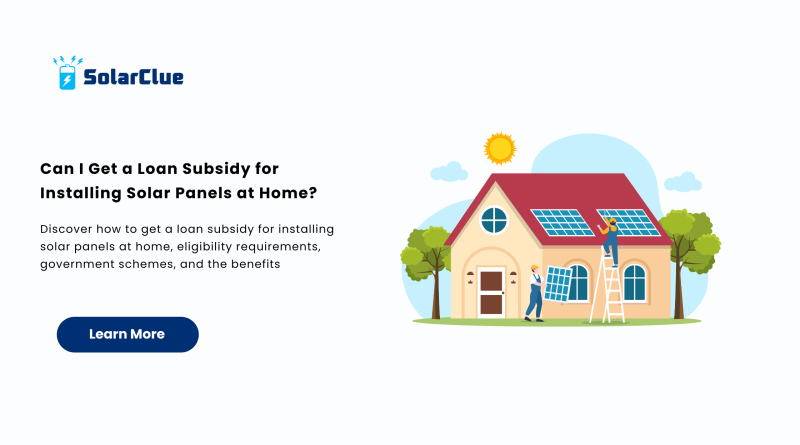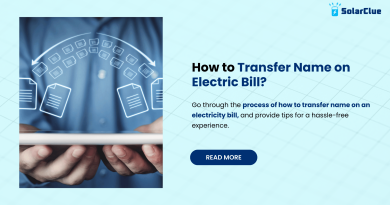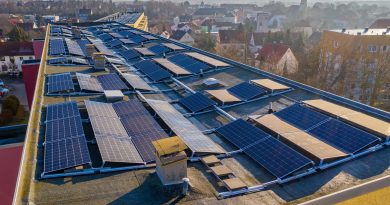Can I Get a Loan Subsidy for Installing Solar Panels at Home?
Switching to solar energy is one of the smartest decisions a homeowner can make today. With increasing electricity costs and growing environmental concerns, more people are turning to solar panels as a sustainable solution. But a common question is: Can I get a loan subsidy for installing solar panels at home? The answer is yes—thanks to various government-backed incentives and financial support systems.
Table of Contents
- 1 Understanding the Solar Panel Subsidy Scheme in India
- 2 What is a Loan Subsidy for Solar Panels?
- 3 Who is Eligible for Solar Loan Subsidies?
- 4 Key Government Schemes Supporting Solar Subsidy
- 5 How to Apply for a Loan Subsidy
- 6 Benefits of Using a Loan Subsidy for Solar Installation
- 7 Cost Breakdown with Subsidy Example
- 8 Choosing the Best Solar Panel for Home
- 9 Solar Panel Benefits Beyond Cost Savings
- 10 Role of Net Metering in Cost Recovery
- 11 Solar Power and Energy Independence
- 12 Frequently Asked Questions (FAQs)
- 13 Conclusion
Understanding the Solar Panel Subsidy Scheme in India
The Indian government has launched multiple initiatives under the Ministry of New and Renewable Energy (MNRE) to encourage solar adoption. Homeowners can benefit from subsidies covering up to 40% of the cost of a solar power system, depending on the system’s capacity and location.
What is a Loan Subsidy for Solar Panels?
A loan subsidy is a financial assistance program where the government pays a portion of your loan interest or principal. For solar panels, this helps reduce upfront costs, making solar installations more accessible to the average household.
Who is Eligible for Solar Loan Subsidies?
Eligibility generally depends on the following:
- Type of property (residential homes are preferred)
- Installation through MNRE-empaneled vendors
- Use of best solar panel for home with quality certifications
- Submission of proper documentation
Key Government Schemes Supporting Solar Subsidy
1. PM Surya Ghar Muft Bijli Yojana
Launched in 2024, this scheme provides subsidies and easy loans for solar panel for home installations up to 3 kW, offering free electricity up to 300 units per month.
2. Rooftop Solar Programme Phase II
Under this MNRE initiative, residential users can get subsidies ranging from 20% to 40% on solar panels depending on capacity.
How to Apply for a Loan Subsidy
- Visit the MNRE official portal.
- Register your home and location details.
- Choose an empaneled vendor who installs solar power system.
- Apply for the subsidy and select a loan partner if needed.
- Post-installation, submit documentation for disbursement.
Benefits of Using a Loan Subsidy for Solar Installation

- Reduced upfront investment
- Quicker return on investment
- Encouragement to opt for the best solar panel
- Long-term solar panel efficiency and performance
Cost Breakdown with Subsidy Example
If a 3 kW solar panel for home costs ₹1.8 lakhs:
- 40% Subsidy: ₹72,000
- Final Cost to Homeowner: ₹1.08 lakhs
- EMI with 5% Interest Loan: ~₹2,000/month for 5 years
Choosing the Best Solar Panel for Home
To maximize benefits, choose the best solar panel with high solar panel efficiency, warranty, and after-sales support. Look for Tier-1 brands approved by MNRE.
Solar Panel Benefits Beyond Cost Savings
- Reduces your carbon footprint
- Increases property value
- Protection against rising utility rates
- Low maintenance with long life span
Role of Net Metering in Cost Recovery
Net metering allows you to feed excess electricity back to the grid, further reducing your power bill. Combined with a loan subsidy, this dramatically shortens the payback period.
Solar Power and Energy Independence
Going solar means you rely less on grid electricity and fossil fuels, promoting a cleaner, greener lifestyle. Solar energy also ensures power during outages with battery backups.
Frequently Asked Questions (FAQs)
1. Is the subsidy available across India?
Yes, but the percentage may vary by state and scheme.
2. Can I apply for a subsidy after installation?
Only if installed by an authorized MNRE vendor.
3. What types of solar panels qualify?
High-efficiency panels approved by MNRE, often listed as the best solar panel.
4. Are these subsidies available for commercial properties?
Most schemes are targeted at residential users.
5. Where can I get more help?
Check out solarclue.com for the latest updates or detailed guides.
Conclusion
In short, yes—you can absolutely get a loan subsidy for installing solar panels at home, especially if you meet eligibility criteria and apply through the right channels. This makes shifting to solar power more affordable and practical for everyday homeowners. Don’t just wait—visit blog.solarclue.com to explore guides, calculators, and expert advice that will help you make the switch confidently.
Looking to power your home the smart way? Head over to solarclue.com and let the sun take care of your bills!




